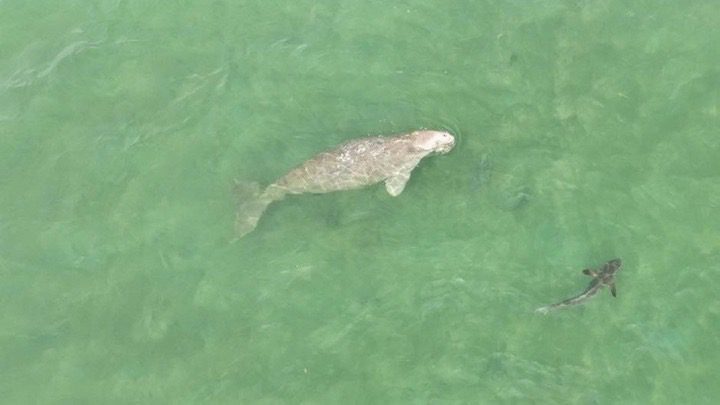The quantity of dugongs in the oceans near the southern province of Trang has decreased significantly, causing concern among marine scientists and conservationists that the animals could become extinct as their main food source, sea grass, diminishes.
The Marine and Coastal Resources Research Centre of the Lower Andaman Sea recently carried out aerial and sea surveys around Libong and Muk islands and nearby seagrass areas to establish the number of dugongs and other rare marine species.
Thirty-six dugongs, including one mother and baby pair, six dolphins, including two babies, and 38 sea turtles were spotted and were healthy and free of injuries from fishing equipment.
However, a survey conducted last year revealed there were 194 dugongs, including 12 mother and baby pairs.
In the seas off Krabi province, a survey last year indicated there were 22 dugongs, including three mother and baby pairs, and 74 sea turtles. A recent survey shows there are now 31 dugongs, including only two mother and baby pairs, and 25 sea turtles.
The sea off Trang province is Thailand’s largest source of seagrass, scattered along the provincial coast and around several islands, such as Libong, Muk, Kang Kao, and Sukorn. It is also rich in marine species, such as crab, fish, sea shells, sea cucumber, and shrimp.
The decline of seagrass beds was first detected about six years ago and has tended to worsen since. In Trang alone, seagrass covers about 5,568 hectares of the seabed, and there are 12 seagrass species.
A team of marine scientists, led by Pinsak Suraswadi, director-general of the Marine and Coastal Resources Department, is scheduled to conduct a survey today of the condition of seagrass in the seas off Trang province, in an attempt to identify the actual cause of its degradation and loss.
The carcass of a dugong, which recently washed ashore in Trang, showed signs of malnourishment and was covered with ascidians, or sea squirts.









